The Daring Dozen (23 page)
Authors: Gavin Mortimer
Tags: #The Daring Dozen: 12 Special Forces Legends of World War II

1SAS rugby team photographed before one of their matches. Paddy Mayne, a former Ireland international rugby player, is pictured second from left in the middle row. (Author’s Collection)

Anders Lassen, Special Boat Squadron, pictured at Lake Commachio, Italy, on 8 April 1945. (Imperial War Museum, HU 2125)

Colonel Edson Raff, known affectionately as ‘Little Caesar’ to his men, is pictured here with Eleanor Roosevelt during a visit to England. Not long after this photo was taken, Raff led his men into North-Africa as part of Operation Torch.(Corbis)

Evans Carlson, US military observer, pictured here with Mao Zedong, leader of the resistance against the Japanese in China, in 1940. (Getty Images)
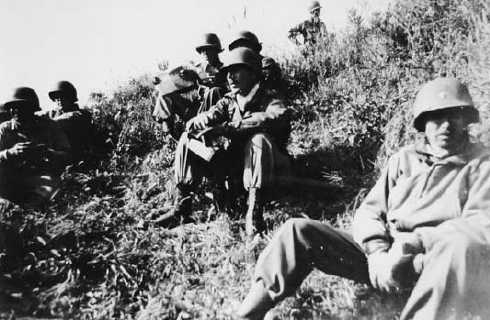
Brigadier General Robert Frederick, centre, establishes his command post just outside of Rome on 4 June 1944. Frederick was popular with his men, always leading from the front. However, as a result of this, he would become the most wounded American general of the war. (NARA)
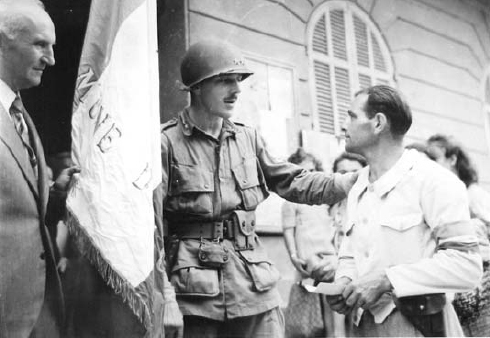
Frederick receives the town flag of Le Muy, France, on 17 August 1944 after his task force liberated the town following Operation
Dragoon
. (NARA)
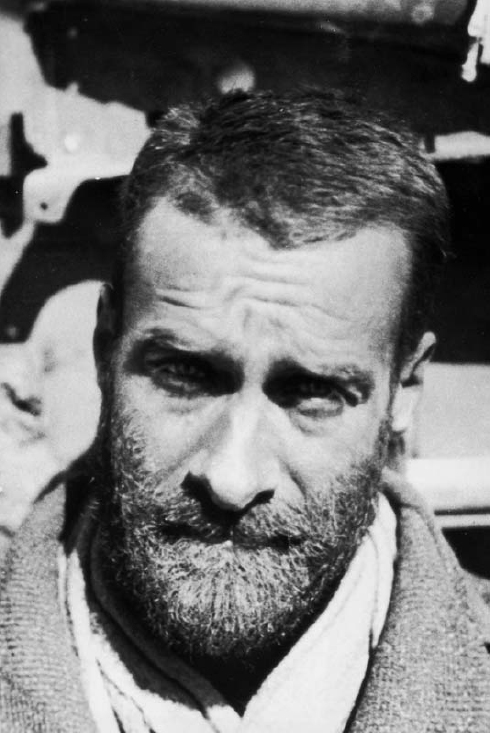
Major Ralph Bagnold, founder and first commander of the Long Range Desert Group, pictured here
c
.1930. (Getty Images)

Ex-commando and Italian Fascist leader, Prince Valerio Borghese pictured here after the war in 1946. (Getty Images)

Friedrich von der Heydte, commander of the Fallschirmjäger, and recipient of the Iron Cross. (Topfoto)

Adrian von Fölkersam (centre) pictured in Budapest with Otto Skorzeny (left). (Bundesarchive Bild 102I-680-8283A-30A)
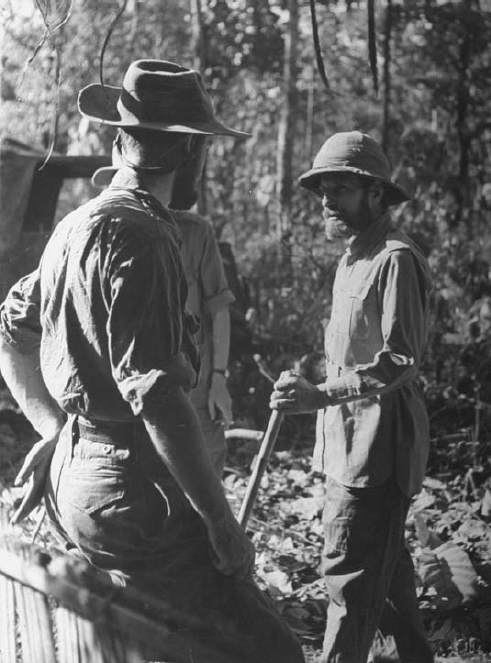
Orde Wingate, leader of the Chindits, in discussion with officers in the jungle along the Burmese border with India during his guerrilla campaign against Japanese troops in the area, 1943. (Getty Images)
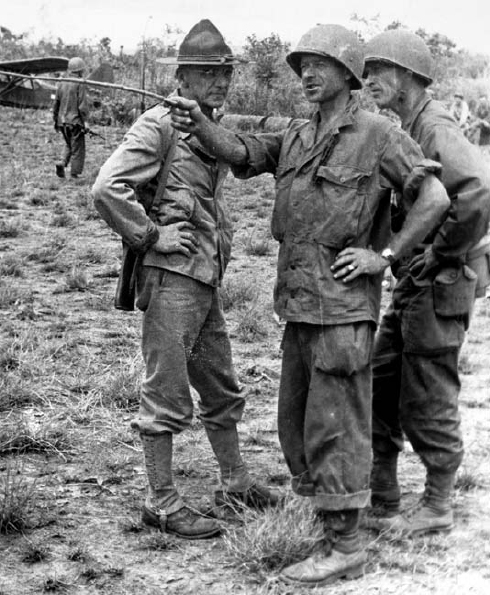
Colonel Charles Hunter (centre), commander of the ‘Merrill’s Maruaders’ commando unit, pictured here in Burma with American general Joseph Stilwell (left) in 1944. (Getty Images)
LONG RANGE DESERT GROUP
Major Ralph Bagnold sat before the General Officer Commander-in-Chief Middle East. He watched nervously as Sir Archibald Wavell picked up the note that Bagnold had sent him half an hour earlier outlining why, in his view, it was imperative to explore the interior of the Libyan Desert. Wavell fixed his one good eye on the man in front of him. ‘Tell me about this,’ he said.
It was 23 June 1940, 13 days after Italy’s declaration of war on Britain, an act of belligerence that had ominous implications for His Majesty’s forces in Egypt and their control of the Suez Canal. Italy might launch an attack from Libya in the west or come from the south, from Eritrea and Ethiopia, and across the Sudan. Faced with such a dire situation, Wavell’s eyes had lit up when Bagnold’s note landed on his desk.
The 44-year-old Bagnold explained that ‘we ought to have some mobile ground scouting force, even a very small scouting force, to be able to penetrate the desert to the west of Egypt, to see what was going on.’
‘What if you find the Italians are not doing anything in the interior?’ retorted Wavell.
Bagnold thought for a moment: ‘How about some piracy on the high desert?’
Wavell grinned, then asked Bagnold if he could be ready to start operations in six weeks.
